Goa Gajah Temple: The Ancient “Elephant Cave” of Bali’s Mystical Heart
Goa Gajah remains an active place of worship for local Balinese Hindus. Daily offerings of flowers, rice, and incense are placed by devotees, maintaining the sacred atmosphere that has lasted for centuries. The temple’s continued importance in Balinese culture is a testament to the people’s unwavering respect for their spiritual heritage. In many ways, Goa Gajah stands as a bridge between Bali’s past and present — a timeless reminder that spirituality, art, and nature are deeply intertwined in the soul of the island.
TOURIST ATTRACTIONSTRAVEL TIPSTRAVEL INFORMATIONCULTURE
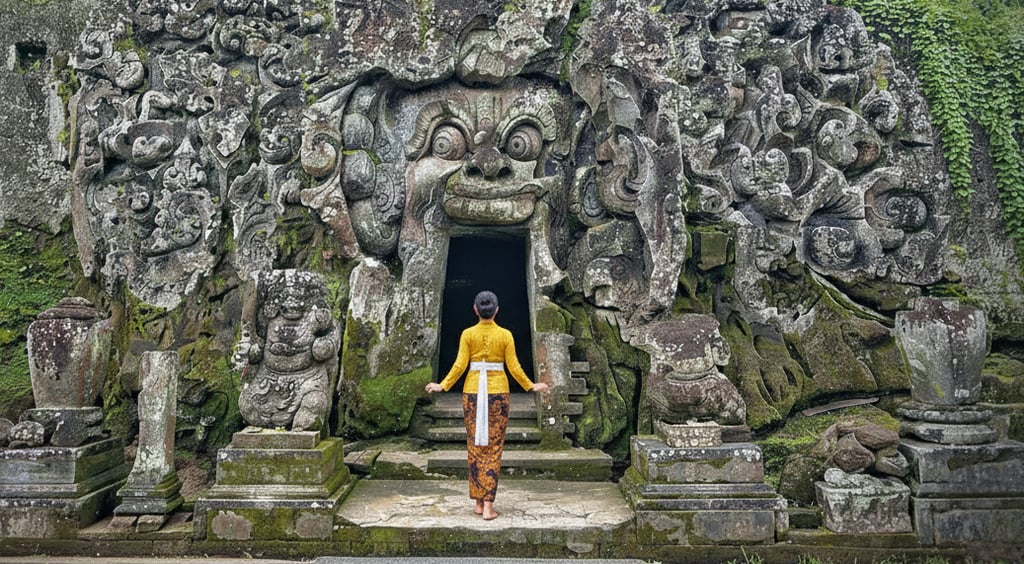

The Ancient “Elephant Cave” of Bali’s Mystical Heart
Hidden in the lush heart of Ubud’s jungle lies a sacred and mysterious sanctuary, Goa Gajah Temple, also known as the Elephant Cave. This spiritual landmark invites travelers to step back in time, into a world where ancient carvings, tranquil fountains, and the whisper of history blend seamlessly with Bali’s natural beauty.
Goa Gajah is not just another temple; it is a gateway into the island’s deep spiritual roots, a place where you can feel the energy of Bali’s past and witness the harmony between religion, nature, and art that has shaped the Balinese identity for centuries.
A Glimpse into the Past: The History of Goa Gajah
The history of Goa Gajah stretches back to the 11th century, during the reign of the Balinese kingdoms. Archaeological evidence and Sanskrit inscriptions suggest that the site was used as a hermitage for meditation by both Hindu and Buddhist priests, a rare combination that makes the temple a symbol of unity among different faiths.
The name Goa Gajah, meaning “Elephant Cave,” remains a mystery to this day. Despite the absence of actual elephants at the site, scholars believe the name may have originated from the nearby Elephant River (Petanu) or the Hindu god Ganesha, the elephant headed deity of wisdom and remover of obstacles, whose statue can be found inside the cave.
Goa Gajah was rediscovered by Dutch archaeologists in 1923 after being buried for centuries beneath layers of earth and vegetation. Further excavations in the 1950s uncovered the temple’s ancient bathing pools, beautifully carved fountains, and statues representing celestial maidens — giving us a fuller picture of how the temple once looked in its prime.
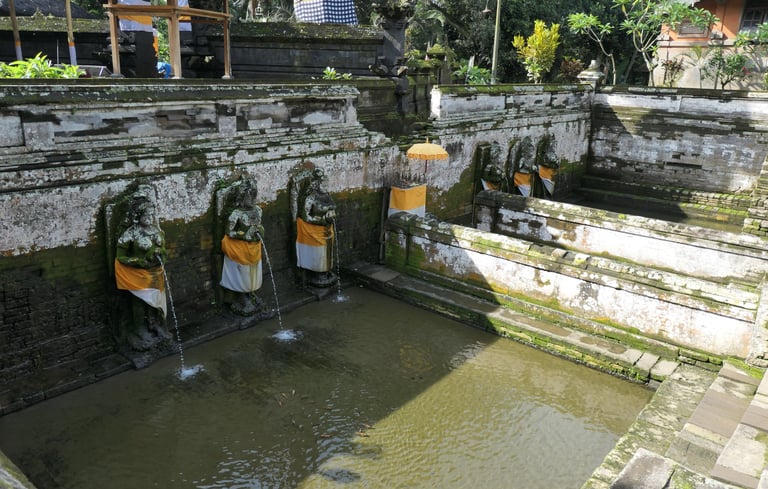

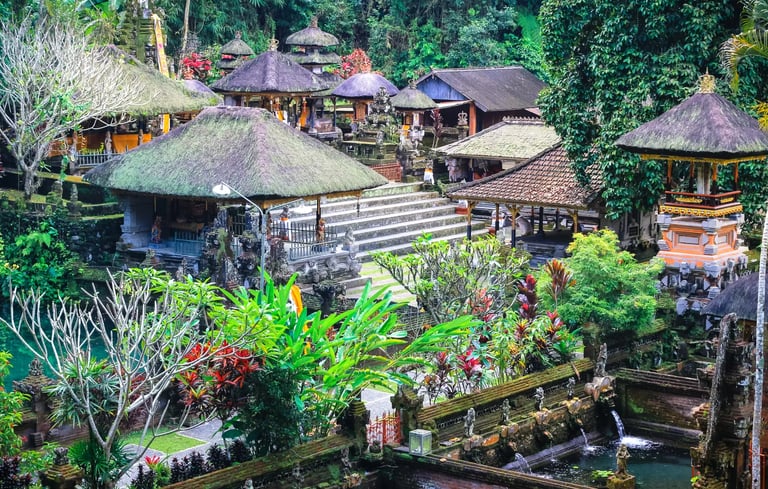

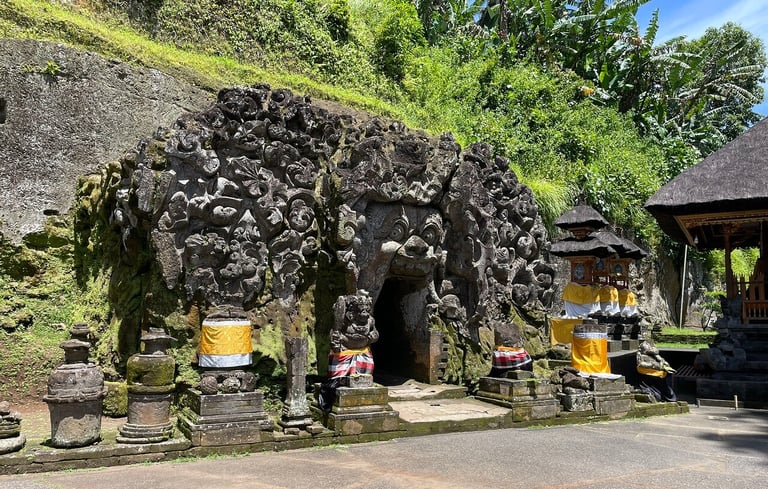

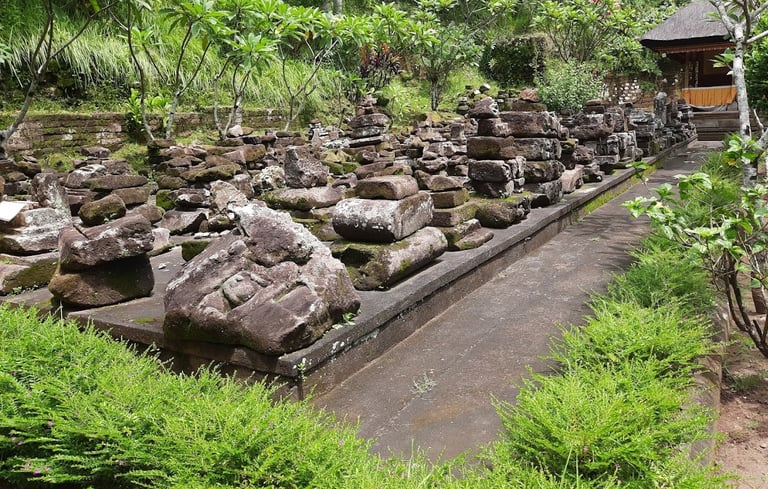

The Enigmatic Entrance: A Symbol of Protection
As you approach Goa Gajah, the first thing that captures your attention is its astonishing cave entrance, a dramatic stone façade carved with demonic faces and swirling motifs. The central figure, with bulging eyes and fanged mouth, appears to be devouring the cave itself. This fierce guardian was designed to ward off evil spirits, a concept deeply rooted in Balinese Hindu philosophy.
Stepping into the narrow, dimly lit cave, you’ll immediately feel the shift in energy. The scent of incense fills the air, and small oil lamps flicker softly along the moss covered walls. Inside, two small shrines stand one dedicated to Shiva and another to Ganesha, offering visitors a rare glimpse into the spiritual devotion of ancient Bali.
Sacred Pools and Spiritual Cleansing
Just a few steps from the cave entrance, a stone stairway leads down to the ancient bathing pools, which were unearthed in 1954. The pools feature six carved stone spouts shaped like nagas (serpent deities), symbolizing purification and renewal.
Local legend says that the water flowing from these spouts holds sacred energy that purifies both the body and spirit. Today, visitors can still witness devotees performing rituals of melukat, a traditional Balinese cleansing ceremony that washes away negative energy and restores inner harmony.
Surrounding the pools, you’ll find serene gardens shaded by towering trees, a peaceful retreat that invites quiet reflection and a deep connection with nature.
A Meeting Point of Hinduism and Buddhism
What makes Goa Gajah truly remarkable is its syncretic spiritual character. Unlike many temples in Bali that are purely Hindu, Goa Gajah exhibits clear signs of Buddhist influence as well. Archaeologists discovered fragments of Buddhist stupas and images of the meditating Buddha near the river, suggesting that the temple complex once served as a joint sanctuary for both faiths.
This duality the coexistence of Hindu and Buddhist symbolism, is a beautiful reflection of Bali’s inclusive spiritual tradition. It reminds every visitor that the island’s true magic lies not only in its natural beauty but in its enduring message of harmony and balance.
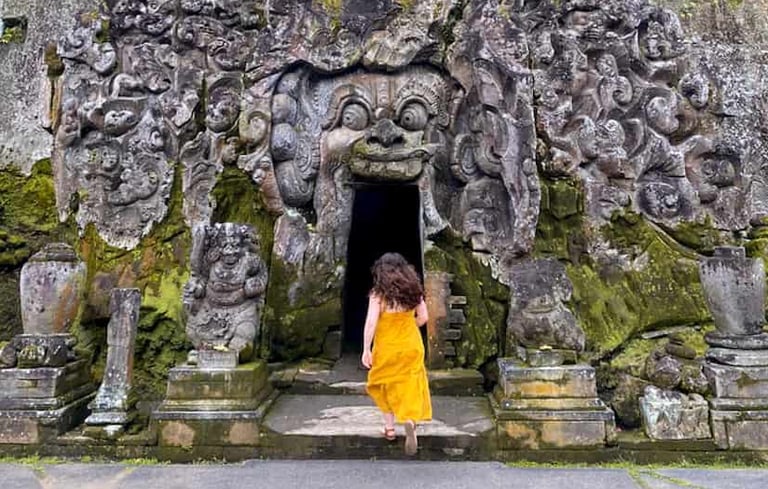

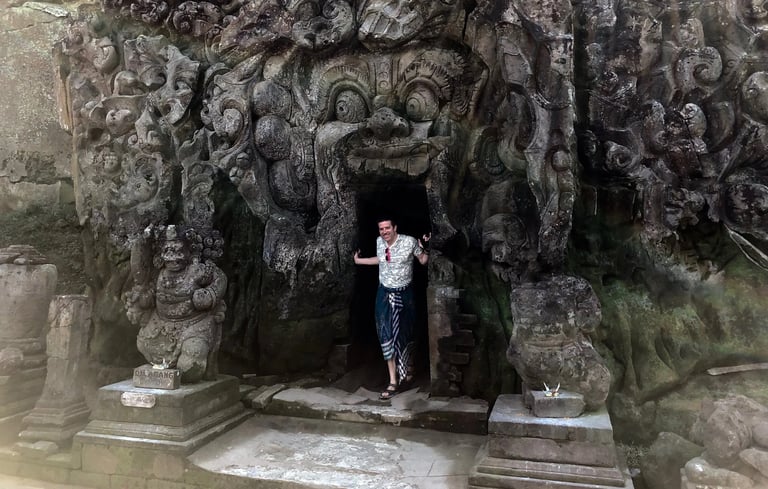

Exploring the Surroundings
Beyond the main temple complex, the Goa Gajah area offers several scenic paths leading to hidden corners of the forest. Follow the steps down the valley, and you’ll discover streams, small waterfalls, and ancient stone relics covered in moss. The peaceful sound of running water and chirping birds provides the perfect soundtrack for meditation or photography.
The lush jungle surrounding the temple gives Goa Gajah an almost mystical atmosphere especially in the early morning, when mist rises gently above the trees, and sunlight filters through the canopy, creating a play of light and shadow that feels almost otherworldly.
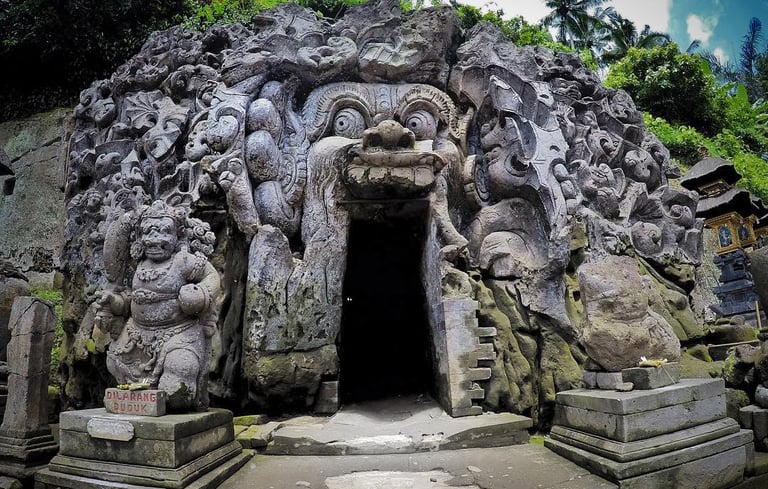

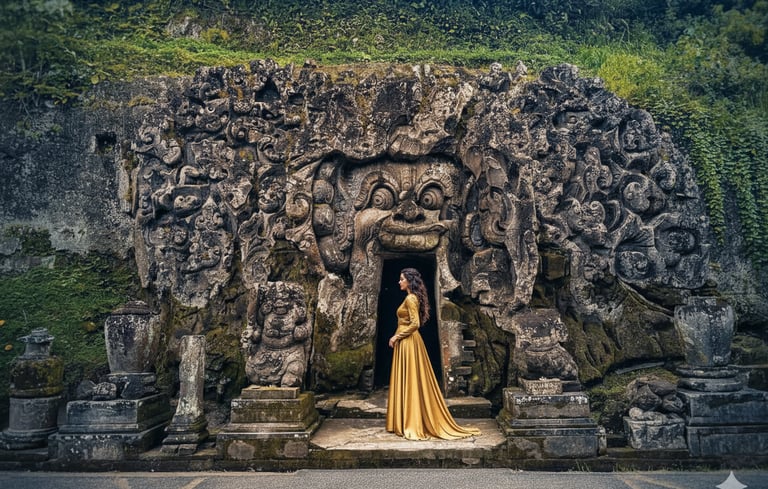

Tips for Visiting Goa Gajah
Arrive early to enjoy the peaceful ambiance before tourist crowds arrive.
Dress respectfully shoulders and knees should be covered.
Bring water and a hat, as the area can get humid.
Take time to meditate or reflect in the quiet corners of the temple grounds.
Hire a local guide to gain deeper insight into the temple’s rich symbolism and history.
Photography and Atmosphere
Photographers will find Goa Gajah to be a paradise of visual storytelling. The contrast of dark cave interiors, moss-covered stone carvings, and bright tropical vegetation creates an incredible visual palette. Whether you’re a professional photographer or a traveler with a smartphone, every corner of this temple offers a story waiting to be captured — from sacred statues bathed in golden light to the reflections in the still waters of the ancient pools.
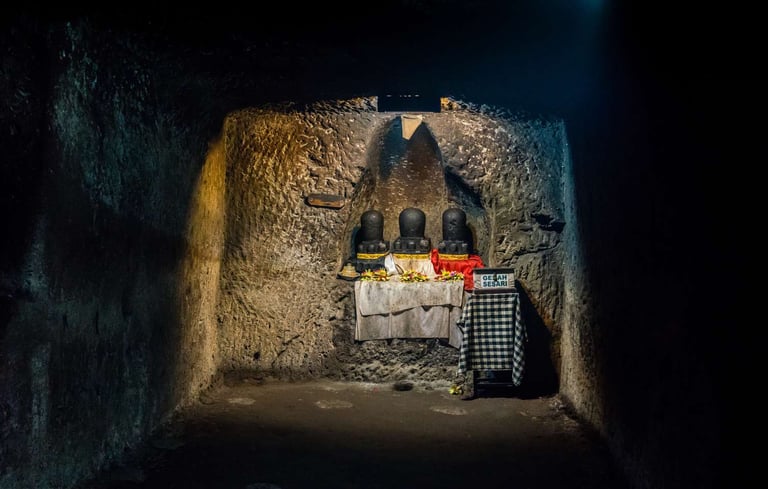

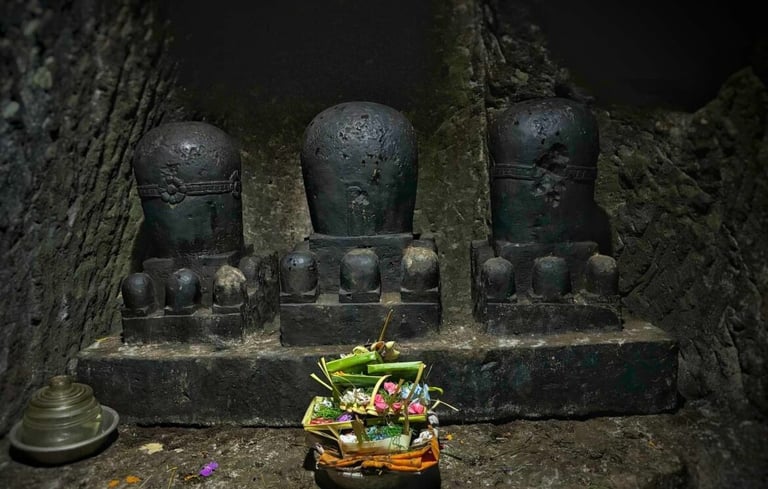

Why You Should Visit Goa Gajah Temple
If you’re seeking more than just scenic beauty — if you wish to understand the spiritual heartbeat of Bali — then Goa Gajah is a must-visit destination. It’s a place where myth and history merge, where the carvings whisper stories from centuries ago, and where the air itself seems to hum with ancient power.
Whether you’re a history lover, a spiritual seeker, or simply a traveler drawn to authentic experiences, Goa Gajah offers a glimpse into the sacred soul of Bali that no other temple quite matches.
Step into Bali’s ancient heart at Goa Gajah Temple.
Let your journey take you beyond the ordinary, where sacred waters flow, ancient spirits linger, and the island’s timeless beauty reveals itself in every stone and shadow.
Plan your visit today with Bali Kami Tour, your trusted local guide to authentic Balinese heritage and unforgettable adventures.
Discover more hidden temples, local traditions, and cultural gems that define the true spirit of Bali.


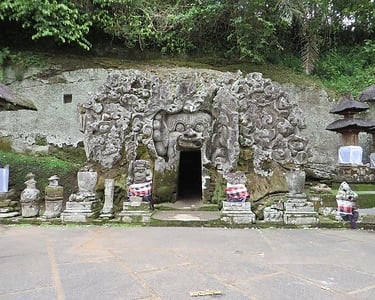



Goa Gajah Temple, Elephant Cave Bali, Ubud Temple, Bali Heritage Site, Bali Spiritual Tour, Ancient Temples in Bali, Bali Kami Tour


